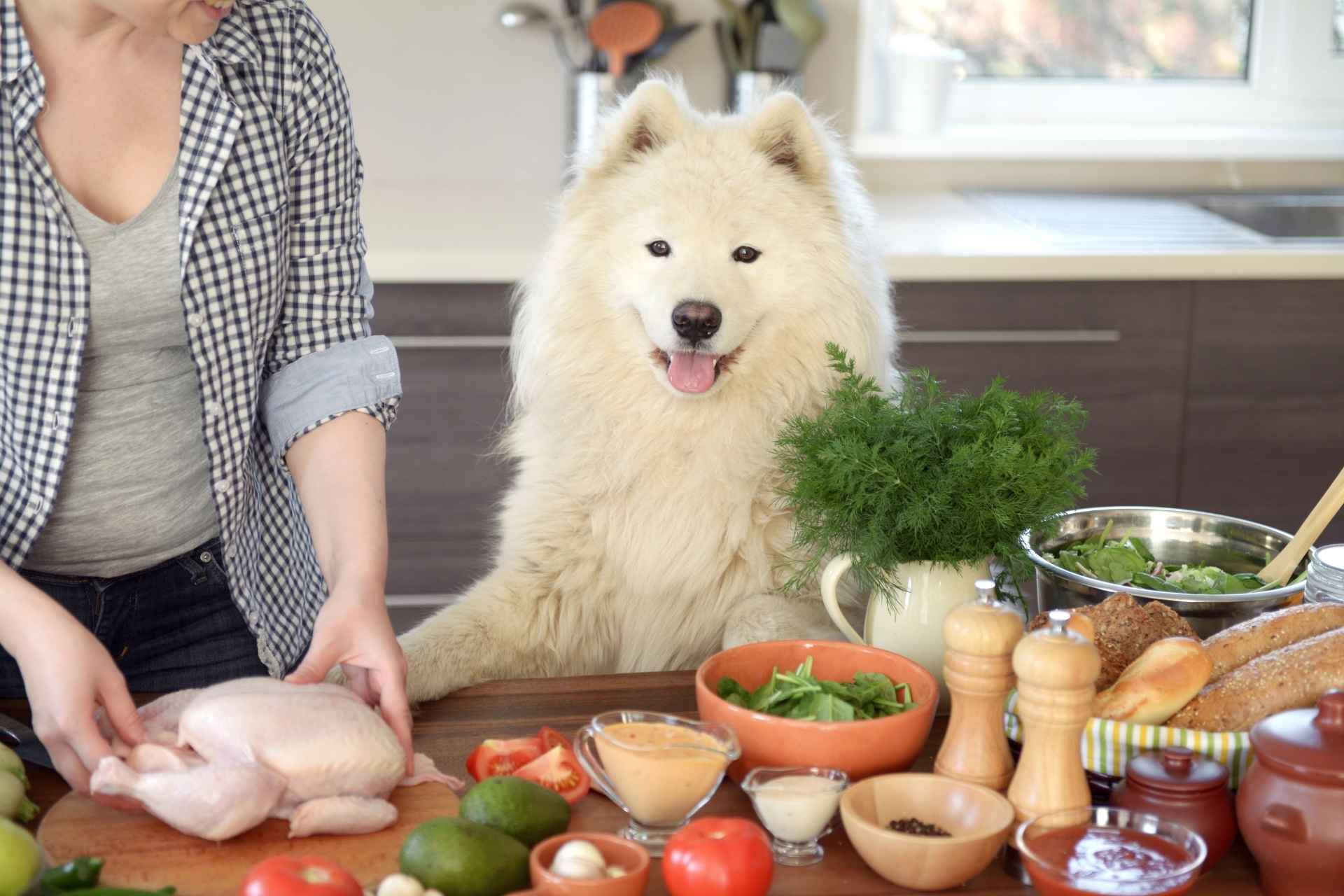If you’ve been thinking about switching up your dog’s diet, homemade dog food is a fantastic way to give your pup meals that are not only delicious but also tailored to their specific needs. It’s no wonder so many dog owners are ditching the kibble and embracing DIY dog food. But is it really healthier? And where do you even start? In this article, we’re diving into the best homemade dog food recipes, answering all your burning questions, and giving you easy-to-follow, vet-approved recipes. Because your dog deserves nothing less.
Why choose homemade dog food?
Healthier meals, tailored to your dog’s needs
Imagine if you could personalize every meal for your dog, ensuring they get the perfect balance of nutrients without any nasty fillers or preservatives. That’s exactly what homemade dog food offers! You can pick high-quality ingredients that suit your dog’s age, breed, and even quirky dietary preferences. Whether your dog needs more protein for muscle gain or less fat to keep them in shape, homemade meals let you control it all. Plus, store-bought food can feel a bit like fast food, while homemade is more like farm-to-table dining.
Strengthening your bond with your dog
Making your dog’s food from scratch isn’t just about nutrition—it’s about showing love. There’s something deeply rewarding about seeing your dog get excited over a meal you made. They’ll probably even start thinking of you as their personal chef (because, really, who runs the show here? 🐾).
Vet-approved for better health
Now, before you start turning your kitchen into a doggie diner, here’s a tip: always consult your vet. They’ll help you figure out the right balance of nutrients, which is especially important if your dog has specific health issues. And yes, homemade meals are a game-changer, but they need to be balanced, just like your own diet (which is easier said than done).
What is the best base for homemade dog food?
Proteins: the building blocks of your dog’s diet
Protein is the cornerstone of any dog’s diet. It fuels their muscles, boosts their energy, and keeps them strong. The best sources? Lean meats like chicken, turkey, beef, and fish. Chicken is often a favorite since it’s easy to cook and most dogs love it. Not to mention, it’s budget-friendly—because yes, your dog can have gourmet meals without breaking the bank. 🙌
Carbohydrates: energy-packed grains and vegetables
Carbs aren’t just for humans; dogs need them too! Think of them as the fuel that powers your dog’s zoomies. Grains like brown rice and quinoa are excellent choices, providing fiber that aids digestion. And don’t forget the veggies—sweet potatoes and carrots are not only tasty but also packed with vitamins. Yes, your dog is basically eating better than you at this point.
Fats: essential for a shiny coat and brain health
Healthy fats are a must in any dog’s diet. Fats from sources like fish oil or flaxseed oil help maintain a shiny coat, healthy skin, and even boost brain health. Just don’t go overboard—too much fat can lead to weight gain, and to be honest, no one likes a sluggish dog who’s too full to chase their favorite toy.
Your inbox needs this
Subscribe to the Petme newsletter for weekly updates with pet care tips, tales, and member-only perks.

Easy homemade dog food recipes to try today
Ready to get cooking? These easy homemade dog food recipes are not only vet-approved but also dog-approved. (And no, you won’t need to become a culinary master to pull these off.)
Chicken and rice recipe for sensitive stomachs
Does your dog have a sensitive stomach? This simple recipe is perfect for pups prone to digestive issues. You’ll need:
- 2 cups of cooked chicken breast, shredded
- 1 cup of cooked brown rice
- 1/2 cup of cooked carrots, chopped
- 1 tablespoon of flaxseed oil
Instructions:
- Mix all the ingredients in a bowl.
- Allow the food to cool before serving.
- Store leftovers in the fridge for up to five days.
This meal is gentle on their stomach and packed with easy-to-digest nutrients. Plus, it’s a great way to spoil them without the risk of an upset tummy. 😌
Beef and sweet potato recipe for a hearty meal
If your dog is the type who can’t get enough of a hearty meal, this recipe will hit the spot.
Ingredients:
- 1 pound of lean ground beef
- 1 large sweet potato, cooked and mashed
- 1/2 cup of chopped spinach
- 1 tablespoon of olive oil
Instructions:
- Cook the ground beef thoroughly in a pan.
- Mix in the mashed sweet potato and spinach.
- Stir in the olive oil for that extra nutrient boost.
This beef and sweet potato combo is not only packed with vitamins but also adds a flavorful twist that your dog will love. It’s like comfort food for canines.
Fish and quinoa recipe for omega-3 boost
Fish is a fantastic protein source for dogs, especially for those that need a little extra shine in their coat. This recipe also brings quinoa to the mix—a nutrient-dense grain that’s easier to digest than traditional grains.
Ingredients:
- 2 fillets of cooked salmon
- 1 cup of cooked quinoa
- 1/2 cup of steamed green beans
- 1 teaspoon of fish oil
Instructions:
- Flake the cooked salmon and mix with quinoa and green beans.
- Add the fish oil for extra omega-3s.
- Serve fresh or refrigerate for later.
This meal is great for boosting skin and coat health and is especially good for dogs with allergies to common proteins like chicken or beef.
How to balance homemade dog food: vet-approved tips
Avoiding common mistakes in DIY dog food
The number one mistake people make with homemade dog food? Imbalance. It’s easy to get so excited about cooking for your dog that you forget they need a proper balance of nutrients. Too much of one ingredient—like protein—can lead to deficiencies in others. And while your dog might love a giant bowl of chicken, they still need a mix of veggies, carbs, and fats. To make sure you’re on track, consult your vet for guidance, especially when starting out.
Supplements and portion control
Speaking of balance, you might need to add supplements to your dog’s homemade meals. Calcium, omega-3, and vitamins like D and B12 are often missing from DIY dog food. Adding a supplement can fill in those gaps and keep your dog thriving. Oh, and watch those portions! Homemade dog food is often richer than kibble, so your dog might not need as much as you think. Consult your vet to get those portions just right.
Is homemade dog food right for your dog?
Weighing the pros and cons of homemade dog food
Sure, making your dog’s food sounds amazing—and for many dogs, it is! Homemade dog food lets you control every ingredient, avoid allergens, and even cater to picky eaters. However, it can be time-consuming and might cost more than you’re used to spending on kibble. Plus, it requires a commitment to ensuring balanced nutrition. The payoff? A healthier, happier dog who’s eating like a king (or queen).
Transitioning from commercial to homemade food
Switching from kibble to homemade dog food? Go slow! Gradually introduce the new food by mixing it with your dog’s regular meals. This helps avoid digestive issues and gives your dog time to adjust to their new gourmet menu. Give it a few weeks, and soon enough, your dog will be licking their bowl clean.
Common questions about homemade dog food
How often should I feed my dog homemade food?
Most vets recommend feeding homemade dog food twice a day, though the exact amount depends on your dog’s size and activity level.
Can I mix homemade food with kibble?
Yes! In fact, mixing homemade food with kibble can provide added flavor and nutrients while still ensuring a balanced diet.
Do homemade dog food recipes need supplements?
Often, yes. Homemade dog food can be low in certain nutrients like calcium, so adding a supplement is a good idea. Consult your vet for advice.
How long can I store homemade dog food?
Homemade dog food can be stored in the fridge for up to five days and frozen for up to three months.
Can homemade dog food help with allergies?
Absolutely! By making your dog’s food at home, you can eliminate allergens and control exactly what goes into their diet, making it a great option for dogs with food sensitivities.
Conclusion: the best meals for your best friend
Homemade dog food is a win-win: you know exactly what’s going into your dog’s bowl, and they get meals tailored to their specific needs. Whether your dog is craving a chicken and rice dish for a sensitive stomach or beef and sweet potatoes for a hearty meal, these recipes will have them begging for more. Just remember to consult your vet and keep those portions in check. And if you want to swap stories and tips with other pet lovers, Petme’s community is the perfect place to connect with fellow dog parents who care about their pup’s diet as much as you do.
Now, time to grab your apron and get cooking—your dog is waiting! 🍲












Join the discussion One Comment